To our members, our partners, and our friends around the world:
The state of Judge Foundry is strong!
As we near the end of our first year of operation, we take a moment to look back on what we’ve accomplished this year.
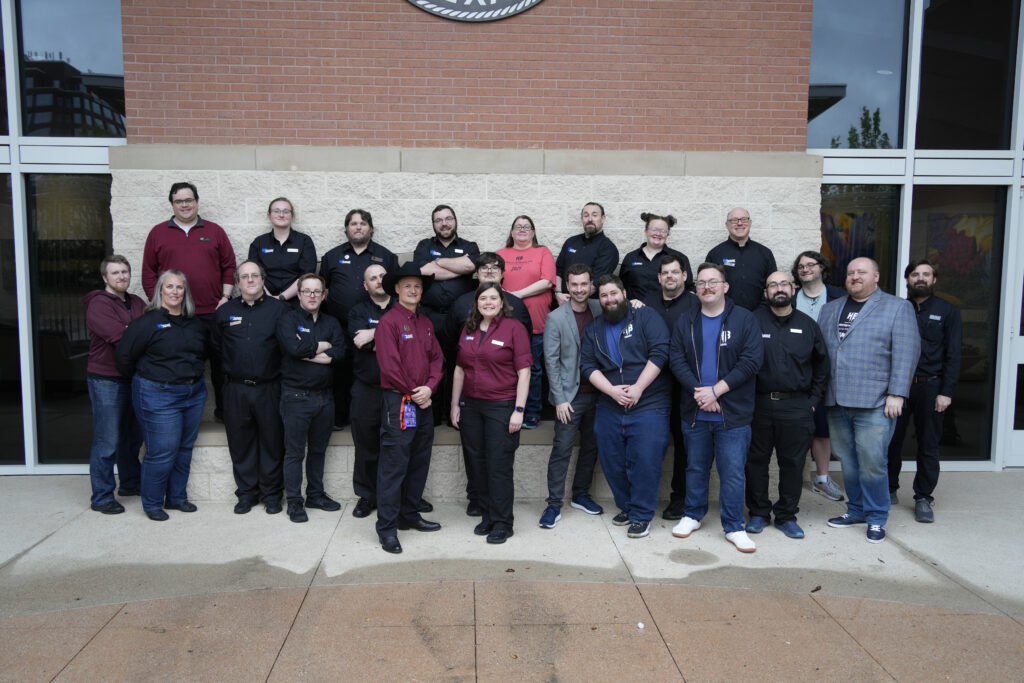
When we first conceived of Judge Foundry last fall, we didn’t know whether it would work. A community-directed non-profit organization had never been tried before by Magic Judges, and we didn’t know how the community would react. All we did know was that judges needed a program to provide training and certification, meaningful progression, and opportunities to demonstrate their skills as judges. We brainstormed a list of values, including a focus on democratically-elected leadership. This was the kind of program to which we wanted to belong, and we hoped others would feel the same way.
The results have been extraordinary. And while we share Judge Foundry’s progress with you every month at our board meeting, we wanted to provide more context here and to sum up where we’ve been before the annual meeting this weekend, to determine where we’re going.
The State of our Membership
Our membership is our surest barometer of organizational health, because our members are at the core of what we do. That’s not just a feel-good slogan, it’s also the legal expectation of a 501(c)(6) non-profit organization like Judge Foundry.
When we did the math to determine at what point we’d have enough members to be financially viable, hitting all our fixed costs from just member dues, we pegged the number at around 400 members. 400 members also seemed like a good target to know if judges were supportive of Judge Foundry as a certifying body. If we couldn’t achieve that target within six months, it meant that there were probably larger systemic issues at play.
This chart illustrates our membership numbers over our first year, based on subscriptions in Stripe, our payment processor:
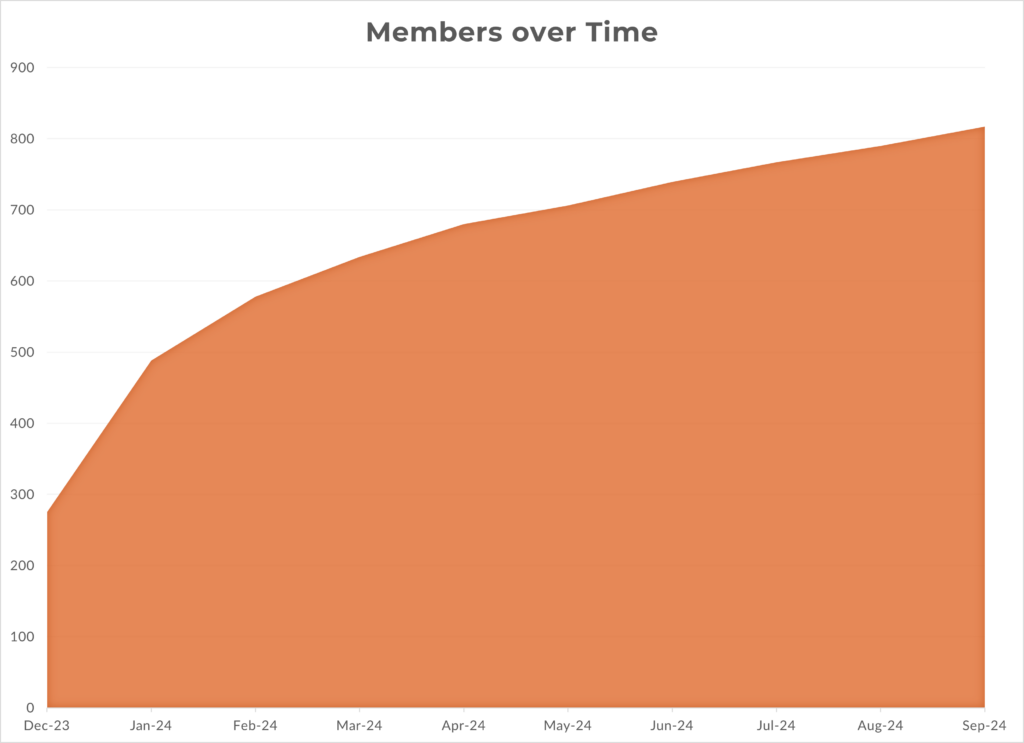
As you can see, we hit our 400th member before the end of 2023 and are currently sitting at more than twice our minimum viable target. Looking forward to 2025, the big question is when we’ll hit 1,000 active memberships.
The second membership metric we’ve been tracking is judges leveling up, especially acquisition of brand new judges. We expected most of our growth in this first year to come from existing judges joining Judge Foundry. But going forward, the pool of people who’ve never been Judge Foundry members is shrinking, so to continue growing we need to bring in more people who’ve never been judges before. (There’s also a small number of people who’ve retired as judges and who decide to come back, and we’re thinking about ways to accommodate them.)
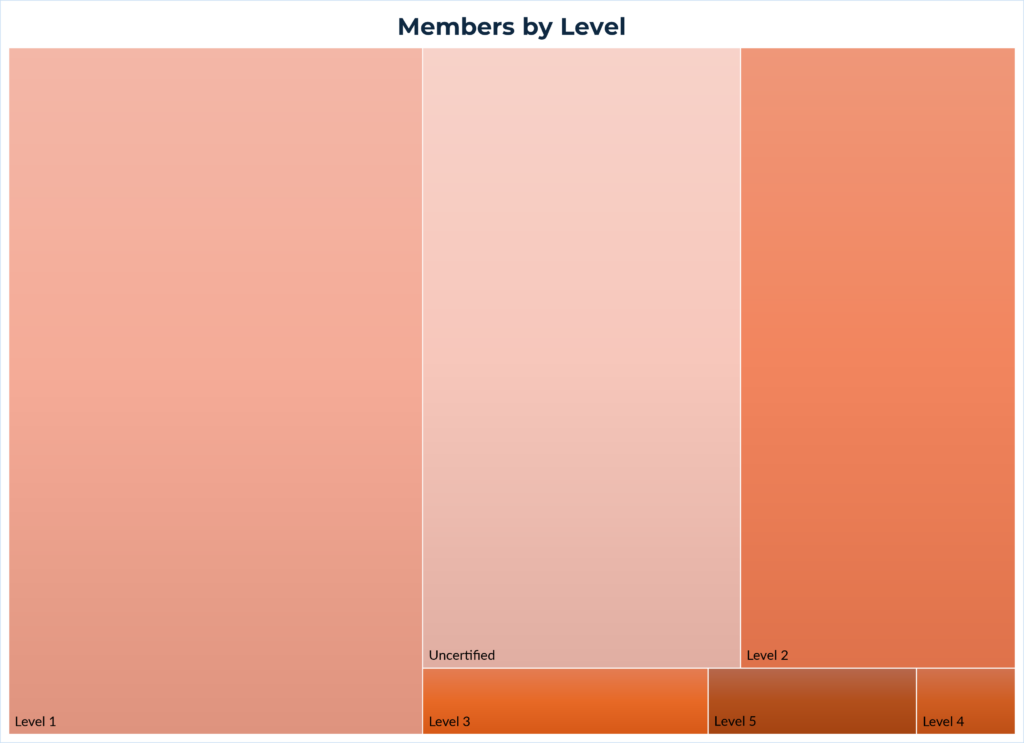
Our expedited and automatic advancement process sorted 28 judges into Level Four and Level Five, a necessary step as part of the new five-level paradigm. These judges were able to start testing Level Three Judges. We’ve seen that process start as we’ve promoted 15 judges to Level Two and 18 judges to Level Three, which significantly increased the pool of people who can test judge candidates. It wouldn’t be unreasonable to hope that we’ll certify 100 more new judges in 2025.
Providing service to our members in both the United States and Canada remains critical to Judge Foundry. At the moment, 88% of our membership lives in the United States and 12% in Canada; these numbers are roughly similar to the total historical number of judges in the two countries on JudgeApps, with Canadian adoption of Judge Foundry slightly higher (91% and 9%). We’ve made it a priority to never forget to include our Canadian members, with changes to our definition of a “multi-day event” altered to include one-day Face to Face shows and with an eye to making sure our requirements are achievable for judges even if they don’t cross the border. We also pioneered a program to send literature about hiring judges and special judge gifts to stores in Canada as part of their F2F RCQ kits, which has been very well-received so far.
We’ve also instituted a regional leadership structure as a new, yet familiar, paradigm for connectivity and communication. Judges elected their regional leadership, and those leaders are now looking at new ways to connect judges with the organization and to make Judge Foundry work locally. We developed our regional structure by listening to feedback from our members, and we’ll continue to find ways to implement member feedback to improve Judge Foundry.
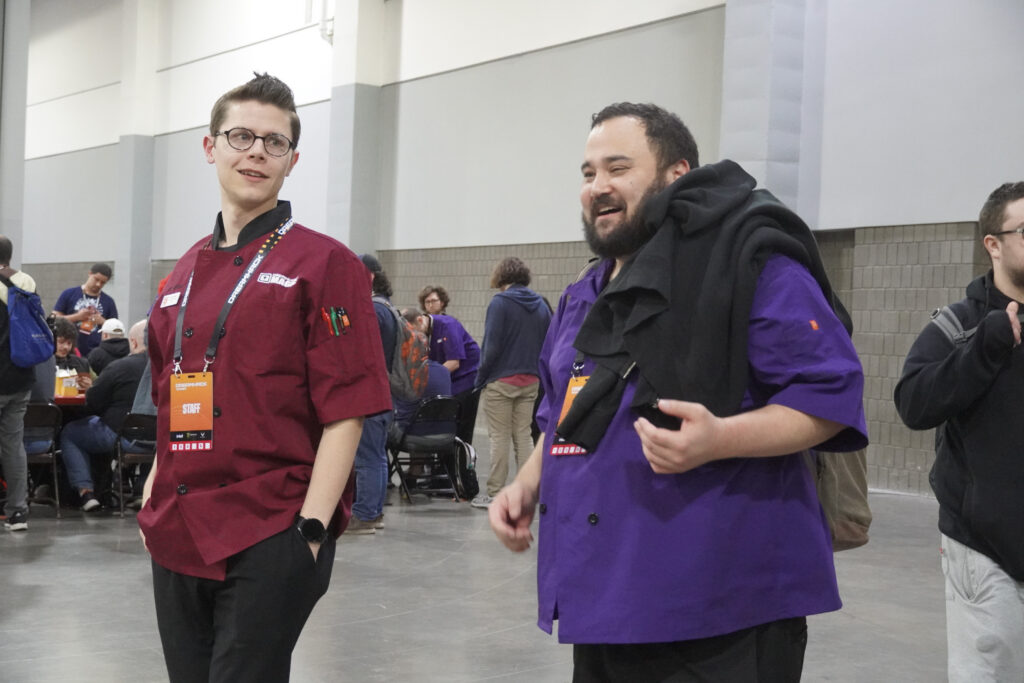
The State of our Finances
As a nonprofit organization, we’ve got bills we need to pay. These include government fees, website hosting, JudgeApps support, financial and legal expertise, and more. Beyond that, we have program ideas that need financial support, like judge conferences and marketing to promote our members to TOs. So our organization’s financial health is another important barometer of our overall ability to serve our members – if we can’t pay our bills, we can’t do much.
We’re pleased to report that Judge Foundry is in excellent financial standing, due to a combination of a healthy membership base, generous donations, and conservative spending. As of today, we have more than $30,000 in the bank, and expected allocated liabilities of less than $10,000, setting us up for a strong start to the next fiscal year.
When we were getting to launch Judge Foundry, we shared an article that outlined why we were charging dues, how much we were planning to charge, and for what we’d be using them. As is required by law, dues are our primary funding mechanism. Because we’ve exceeded expectations on member growth, dues revenue has gone up faster than we expected. While this is a choice for the next elected board to make, we expect there will be little need for an increase in dues.
Our finances were further bolstered by an amazingly generous gift from Tim Shields, who donated 10% of the US proceeds from a merchandise sale to Judge Foundry. Tim’s gift made up a significant portion of our FY24 revenue, and we’re extremely grateful to him for it.
Merch profits accounted for 9% of our revenue. We sold merchandise as a way to supplement dues, to get our brand out there while letting judges make voluntary contributions to Judge Foundry and get something exciting for it, with a mandate that merch would subsidize dues and not the other way around. While the net revenue on the first wave of merchandise orders was excellent, profitability on subsequent waves declined, due to lower volume. We will probably have to raise prices or reduce shipment frequency, given that the quantity discounts for many items are significant and we do not want to tie up too much of our money in merchandise that will take years to sell.
This chart illustrates where Judge Foundry’s revenue came from in FY24. All percentages are based on revenue after costs (including Stripe fees for all payments, and shipping, fulfillment and COGS for merchandise).
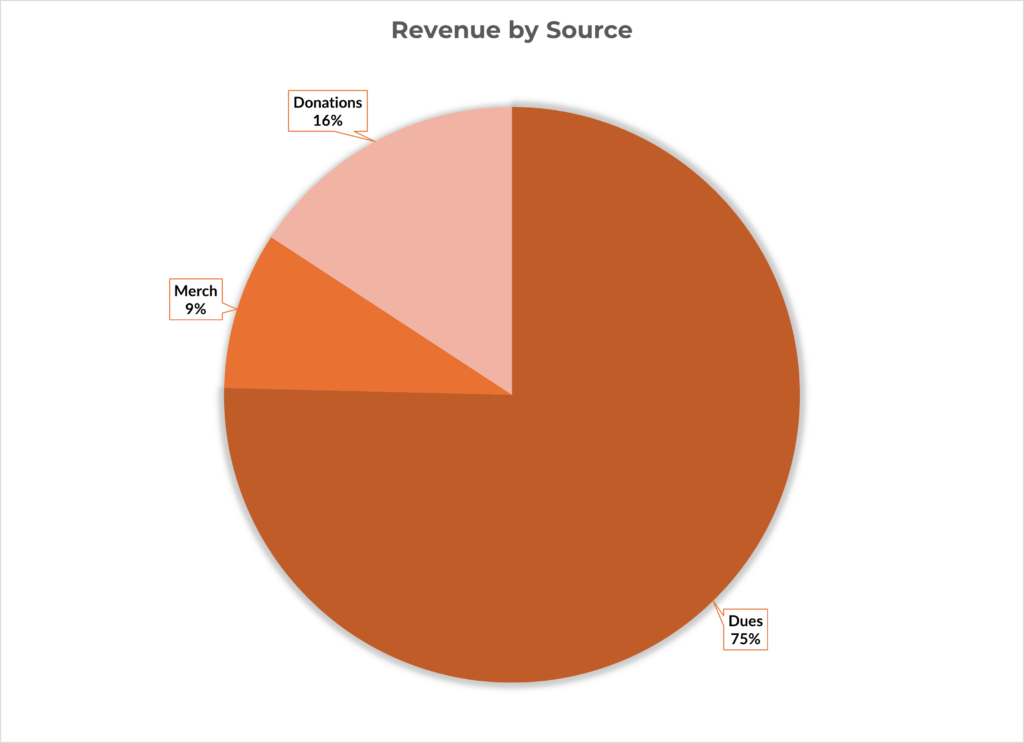
In terms of expenses, non-fundraising expenses (that is, expenses excluding Stripe fees and merchandise-for-sale costs) were primarily focused on infrastructure this year. This was largely a result of money being allocated to program expenses that hasn’t been spent yet – programs like the JudgeCast partnership to create educational videos, community project grants and conferences all had significant line items in the budget but were slow to get off the ground, so they’ll likely see expenses paid in FY25.
This chart breaks down our non-fundraising expenses:
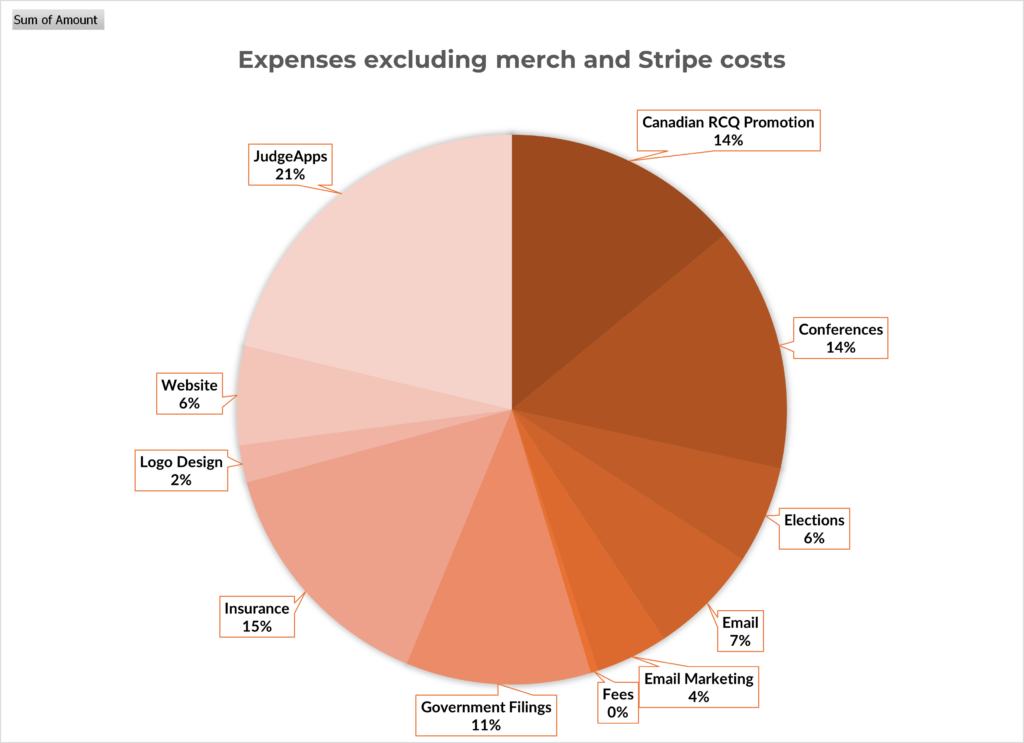
Overall, Judge Foundry is in very healthy financial shape going into FY25. We anticipate that dues can stay stable and that we’ll continue to be able to pay our bills and to expand our expenditures on program activities to provide more services for our members.
The State of our Exams
Testing is the one of Judge Foundry’s biggest initiatives, and one that touches almost every judge, whether they’re leveling up, taking an update quiz, testing their knowledge on a practice quiz, or testing a candidate. As of today, Judge Foundry has served 1,584 exams, including 197 advancement exams, 634 practice quizzes, and 753 update quizzes. Here’s the breakdown of tests taken (note that Bloomburrow quizzes are still open, and L2+ judges can take them through September 24th):
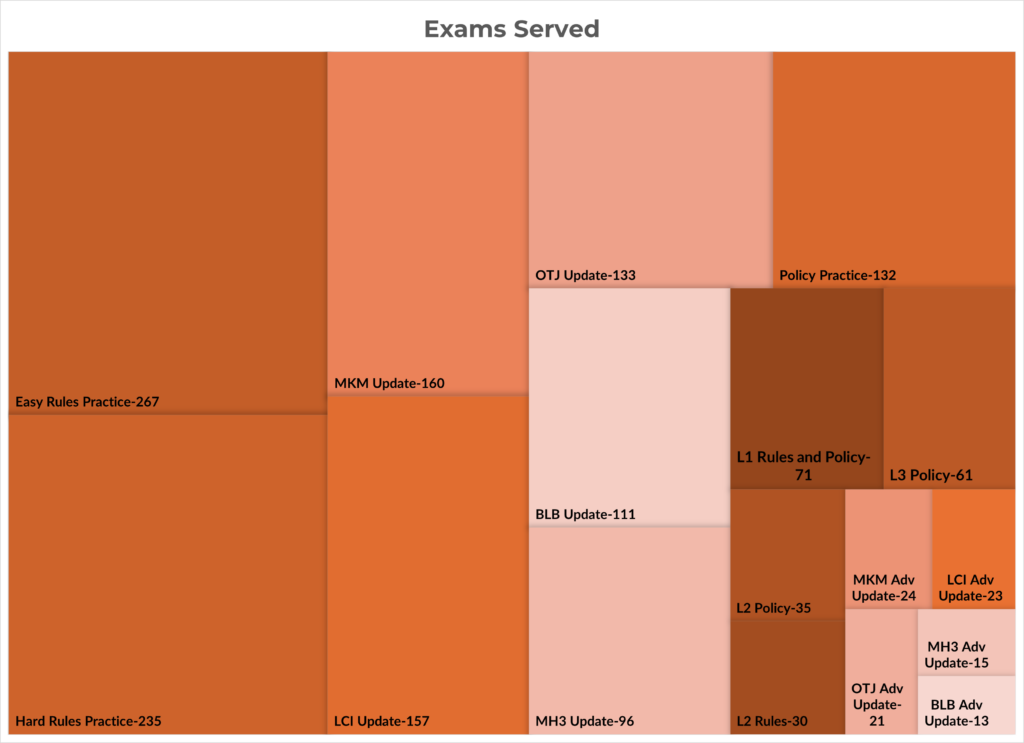
When we launched Judge Foundry last fall, we knew exams would be a top priority because we’d want to certify new judges and to promote existing members. This was especially the case as we introduced the new five-level system that expanded out the old Level Two (and, to a lesser extent, Level Three), and we expected that we’d have many judges to sort into their new levels in short order.
With the work of almost two dozen volunteers, we’ve written more than four hundred exam questions across the various tests. Much of the work here can be credited to the exam managers, whose tireless efforts keep adding new questions into the pools and who respond to test-taker and proctor feedback to improve our testing.
One area where we’ve been steadily making progress is in exam pass rates. Here’s where we stand today, since the beginning of Judge Foundry:
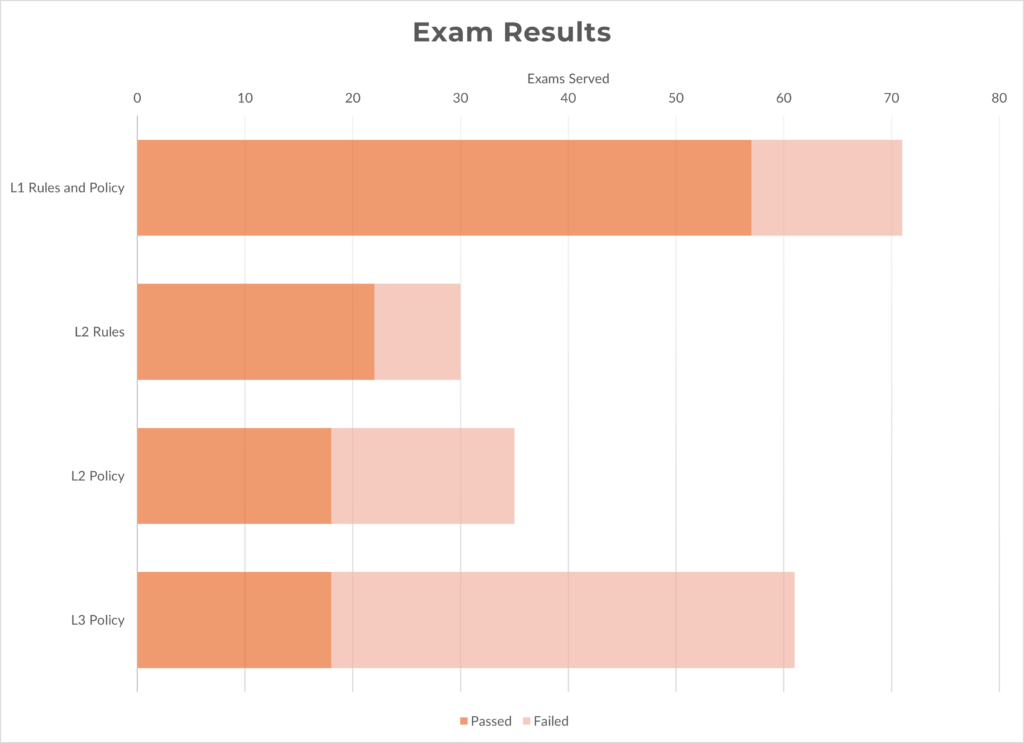
The L1 and L2 Rules tests are about where we want them to be in terms of difficulty, but the L2 Policy and L3 Policy exams have seen significant changes since launch. As we’ve added more questions to create enough for two attempts on L2 Policy and three attempts on L3 Policy, we’ve also reduced the difficulty on these exams while still ensuring that judges have the policy knowledge needed.
Earlier this month, we introduced Preparation Tests, a new exam that gives candidates for advancement a chance to check their skills against questions pulled from the actual advancement exam to provide a gauge of difficulty. We expect this to further increase pass rates, alongside efforts to improve policy knowledge like the impending return of The Knowledge Pool.
And beyond just providing exams for our own members, we’ve been able to license our exam content to programs around the world. Judges in Finland, South Africa, Iceland, Norway, Sweden and Denmark all take Judge Foundry exams, and we’re looking to partner with even more programs in the future. By licensing our exams, we bring in revenue to support our efforts while also supporting the growth of regional programs that can provide excellent service to their members, but may not be able to develop a full testing system.
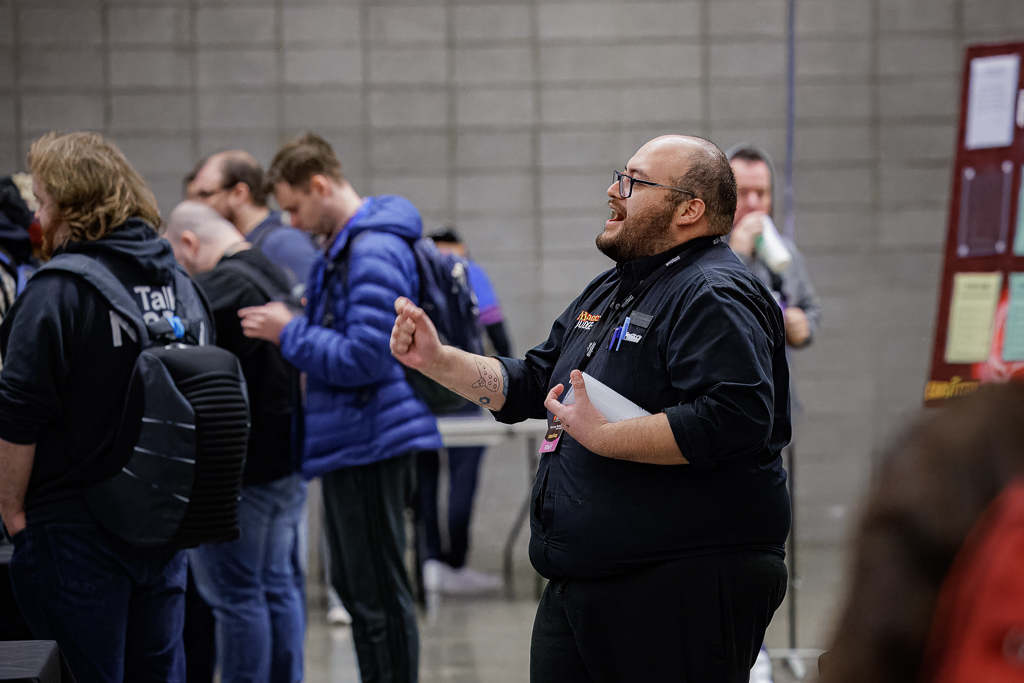
Conclusion
The state of Judge Foundry is strong, but it’s up to all of us to keep it that way. The future is up to our members to choose and the best way to ensure that we continue to prosper is by getting involved. Start or join a project. Mentor a judge candidate or help a friend to level up. Organize a conference. Give feedback. Vote. Judge Foundry will continue to grow and improve as long as our members believe in it.
The next steps for our organization are up to the next leaders elected at our annual meeting. We thank you for the chance to serve our community, and we’re excited to see what comes next for Judge Foundry.
Respectfully submitted,
Amanda Coots, President and Director
Joe Klopchic, Vice-President and Director
Rob McKenzie, Secretary and Director
John Brian McCarthy, Treasurer and Director
Paul Baranay, Director
